

North Members’ Showcase May 2023 Issue 5
Contemporary
Contemporary North
(Part of the RPS Contemporary Group)
Members’ Showcase
provides a platform for contributors to our monthly meetings to display the work they have shared.
Contributors have curated their own images and provided the accompanying text making this a collaborative group venture.
Designed and compiled by Lyn Newton
Cover image by Peter Bartlett
20th May 2023—Meeting in person at Clements Hall, York
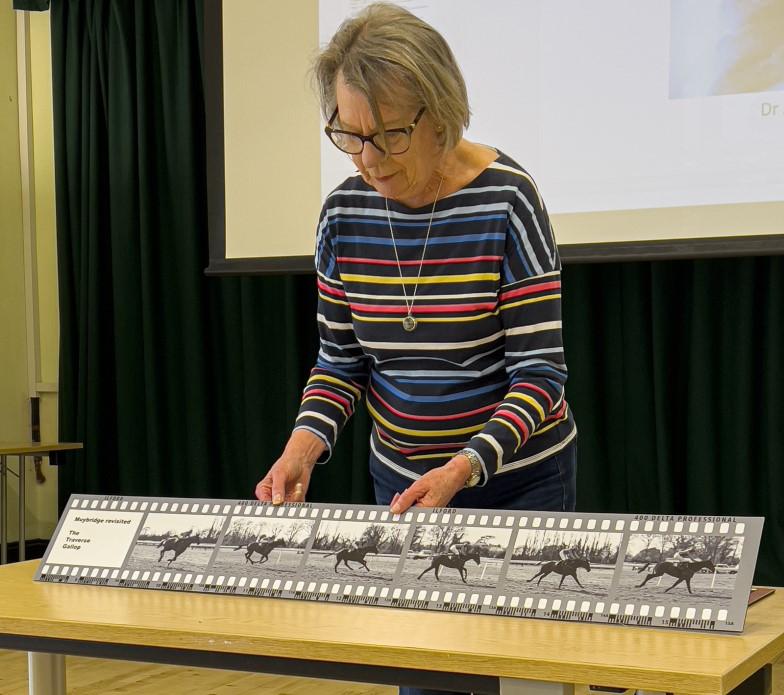

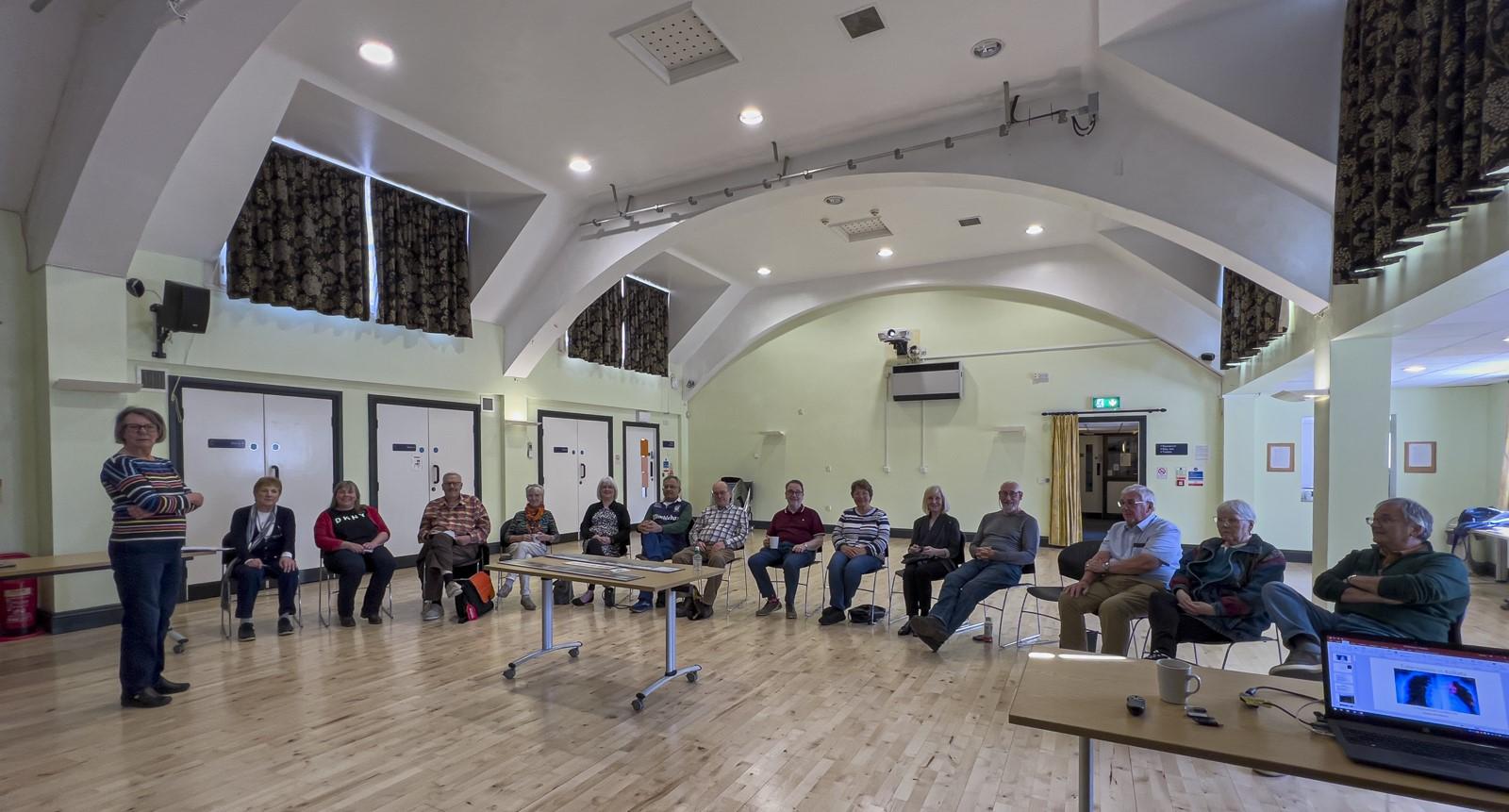
Chaired by Patricia Ruddle
Contributors:
Christine Pinnington
Neil Wittman
Celine Alexander Brown
Avijit Datta
Patricia Ruddle
Rachel Perry
Lyn Newton
Martyn Pearson
Peter Bartlett
Images and content of this publication are the copyright of the photographer unless stated otherwise
Christine Pinnngton
Christine showed two projects she has been working on.
Below she has re-created the film strip of Eadweard Muybridge’s Traverse Gallop in all detail including the film key codes.

Using the same technique, Christine has applied it to a study of a seaside resort again with authentic details.

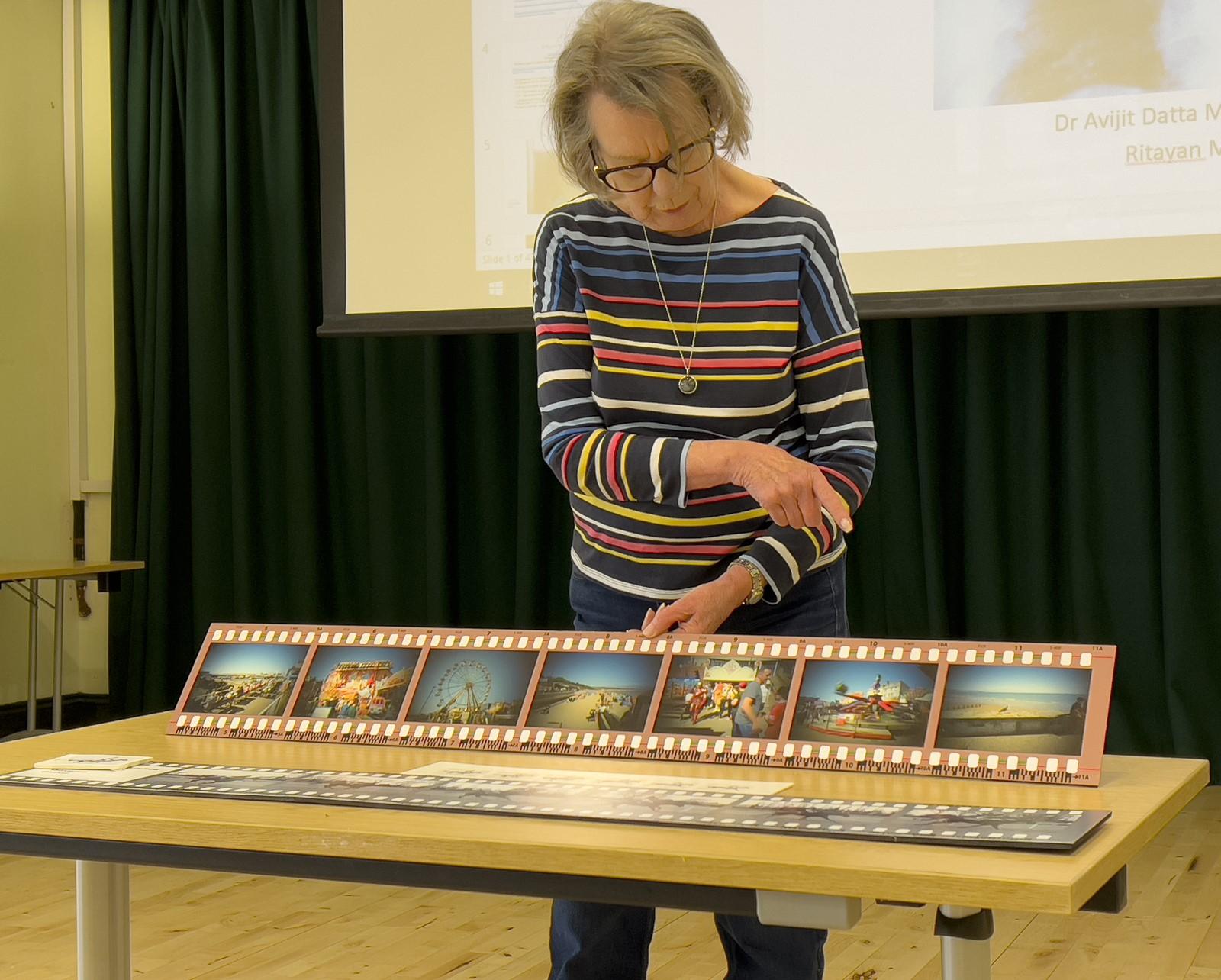
Neil Wittman
Inspired by friends in the photographic art world I have begun experimenting with explosion books, accordion books and traditional bound books to present my photography.

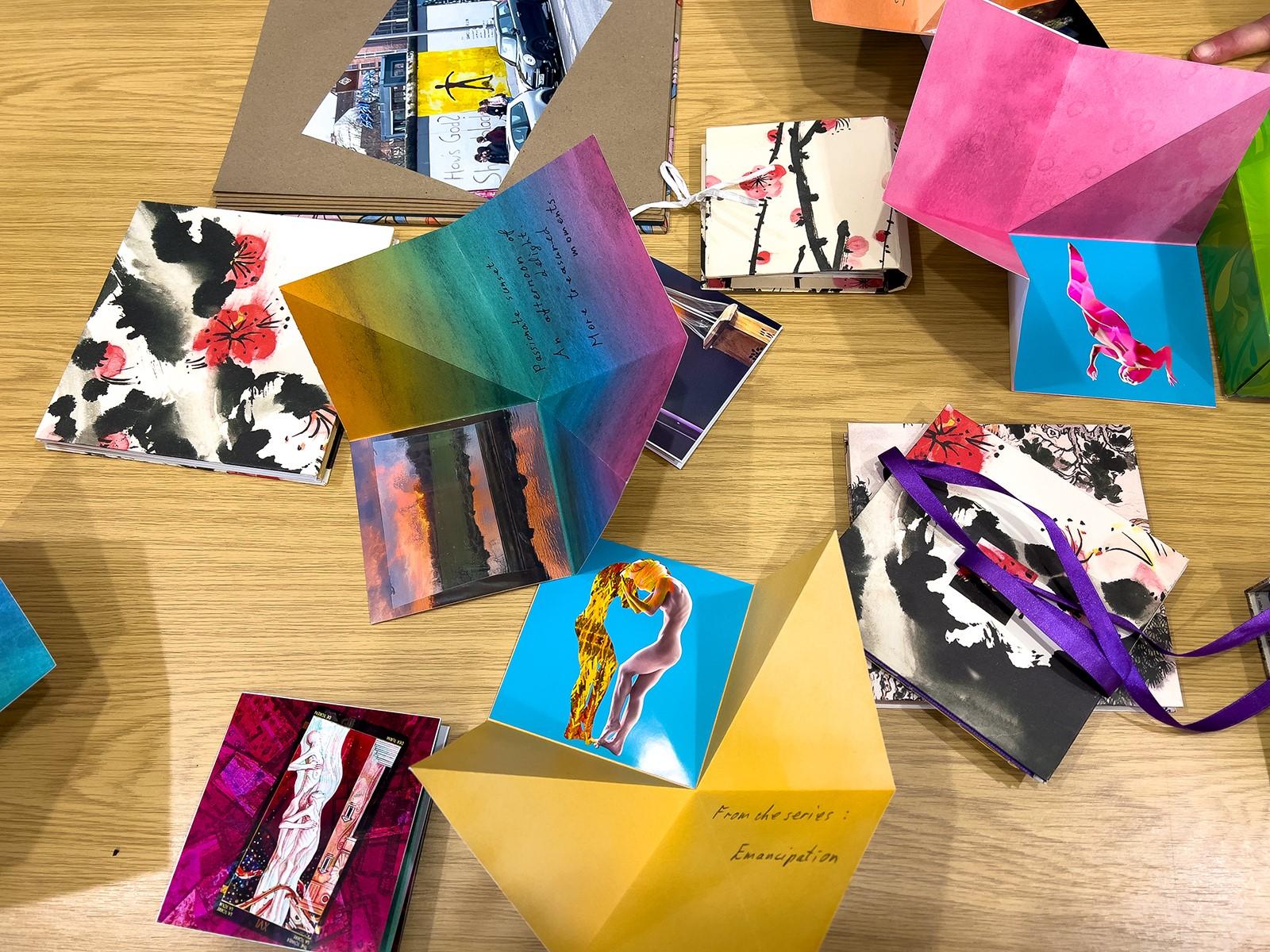
While enjoying a birthday treat in Berlin, I restricted myself to my 5DIII and f1.2 50mm lens. I found myself having to put the ‘pointy bits’ of buildings into the corners of the frame in order to include the whole building. I included these pictures in a hand bound book, orienting these prints with architectural verticals appearing vertically on the page. Having been interested in esoterica for many years I was attracted to a tarot deck based on the art of Gustav Klimt and have begun to explore presenting a tarot reading using photography with haiku in a small explosion book. All the work shown so far is quite experimental and I hope to improve on the presentation as I produce more and continue to enjoy the crafting process.
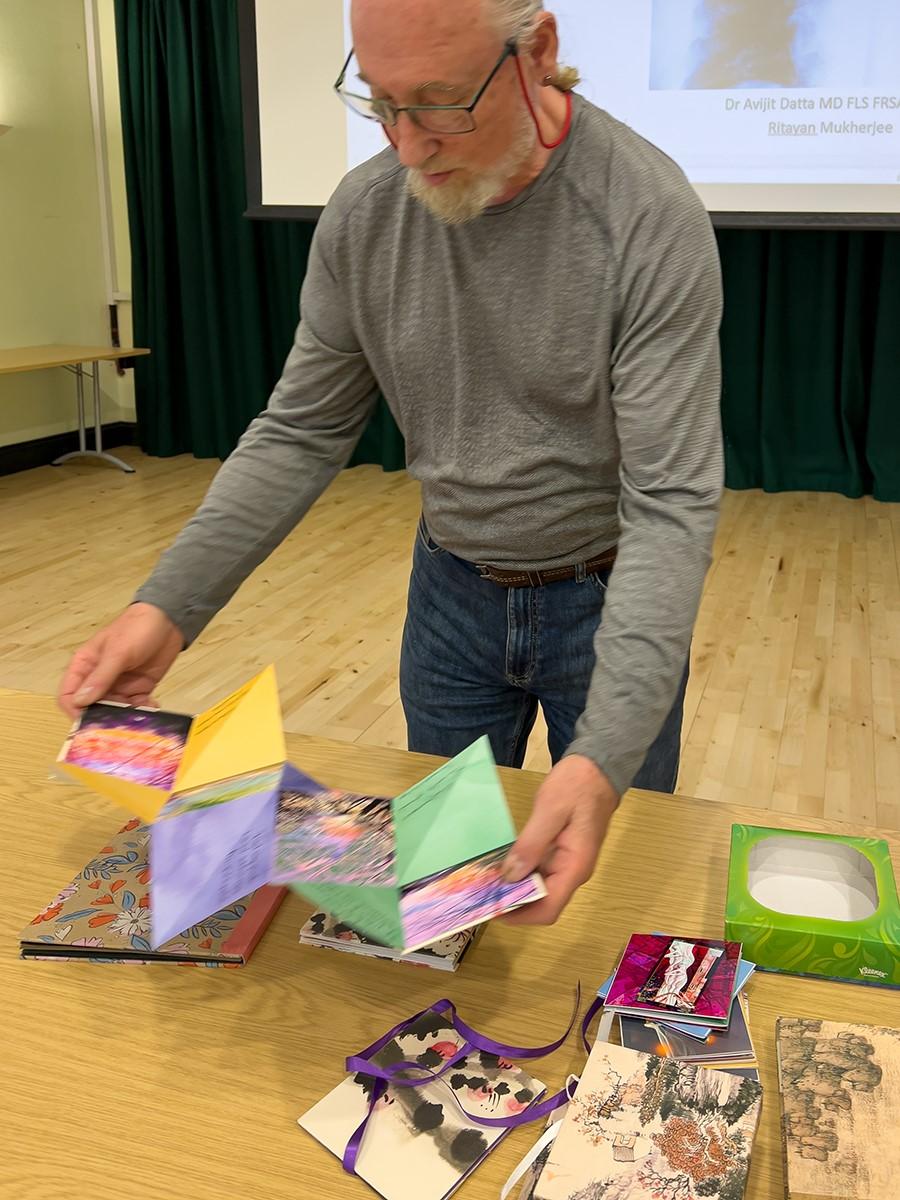
I started trying to write haiku (to compliment some of my photographs) around 18 months ago. More recently I thought I would incorporate some of these into explosion books.
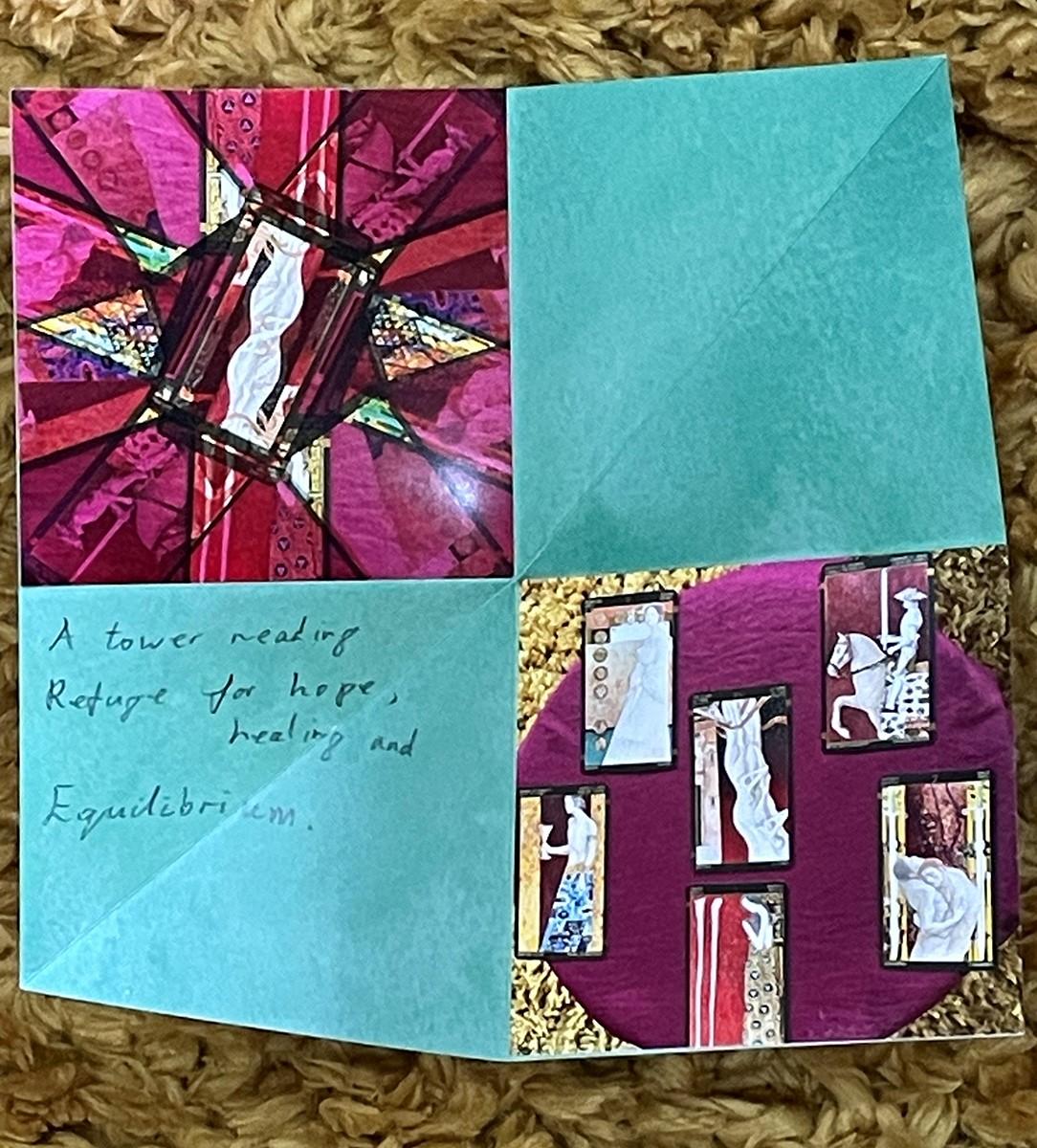
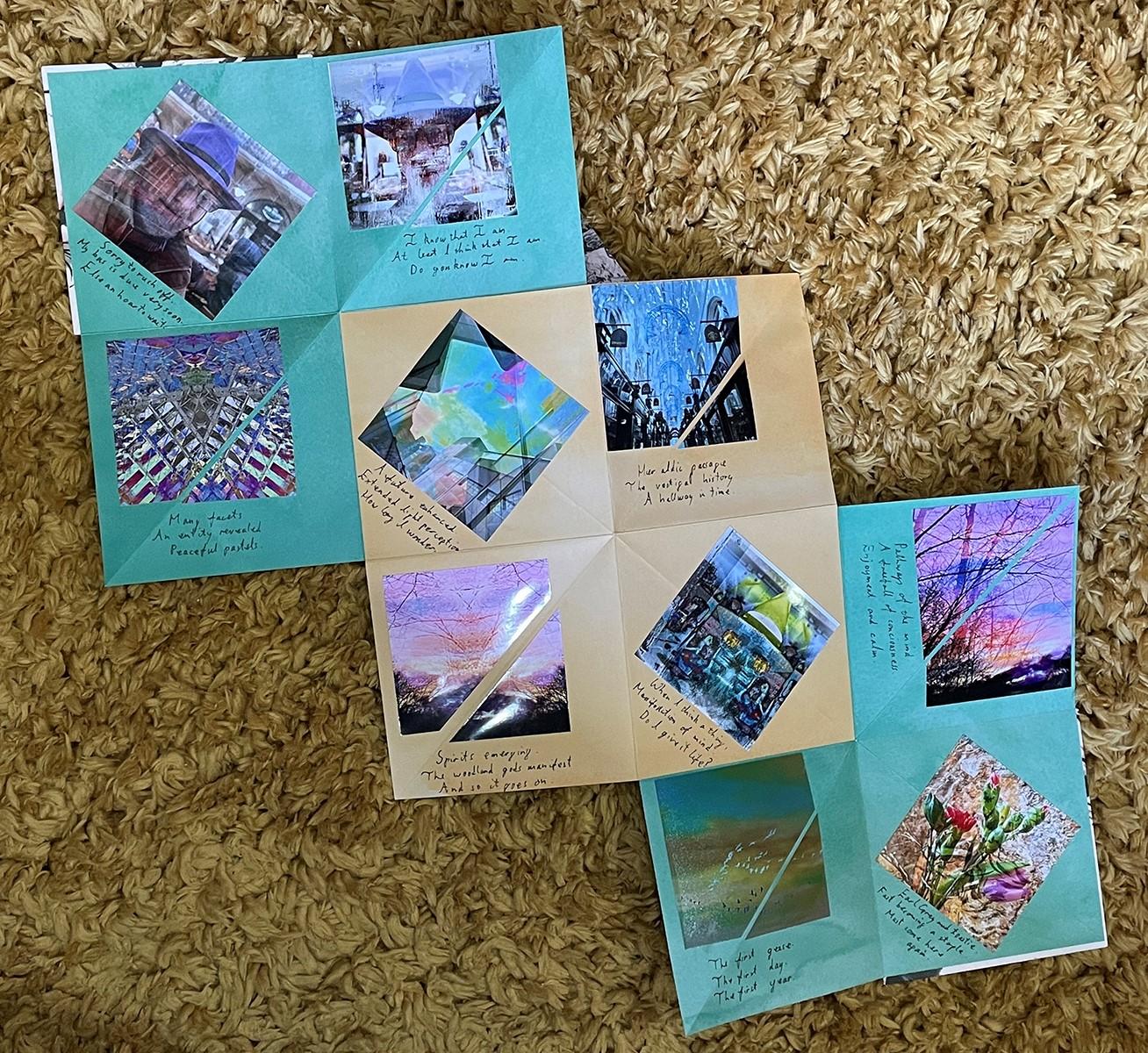
Celine Alexander Brown
I recently had an exhibition of my images at the Heritage Art Gallery on Teesside.

I called the exhibition Eyes of the Heart because that is how I respond when I take photographs. My aim was, in a time of upheaval for everyone, to share the beauty of the world around us and to lift people’s spirits, as photography has done for me.
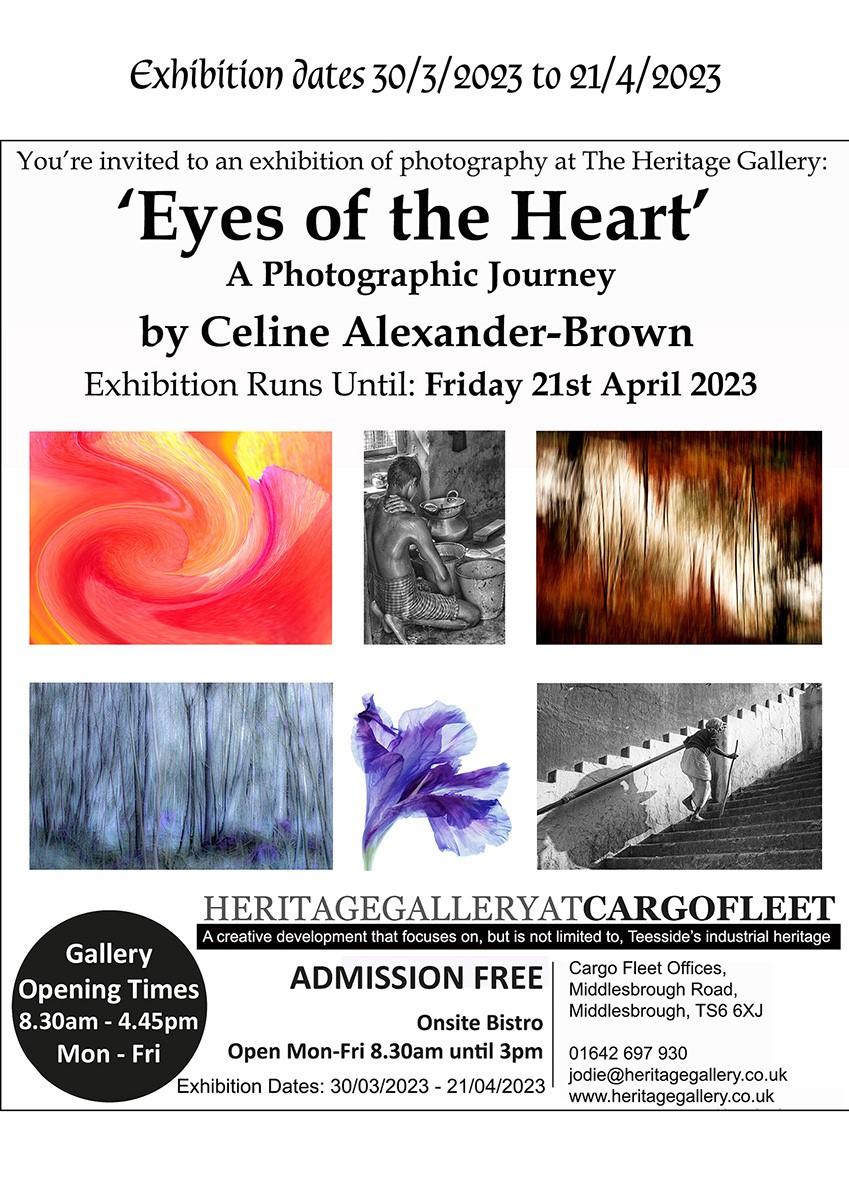
I began my photography 15 years ago and at first, because of circumstances, could only take photographs in my garden. The following images evolved at this time.
 Cosmos
Dewdrops on Sweet Pea
Cosmos
Dewdrops on Sweet Pea
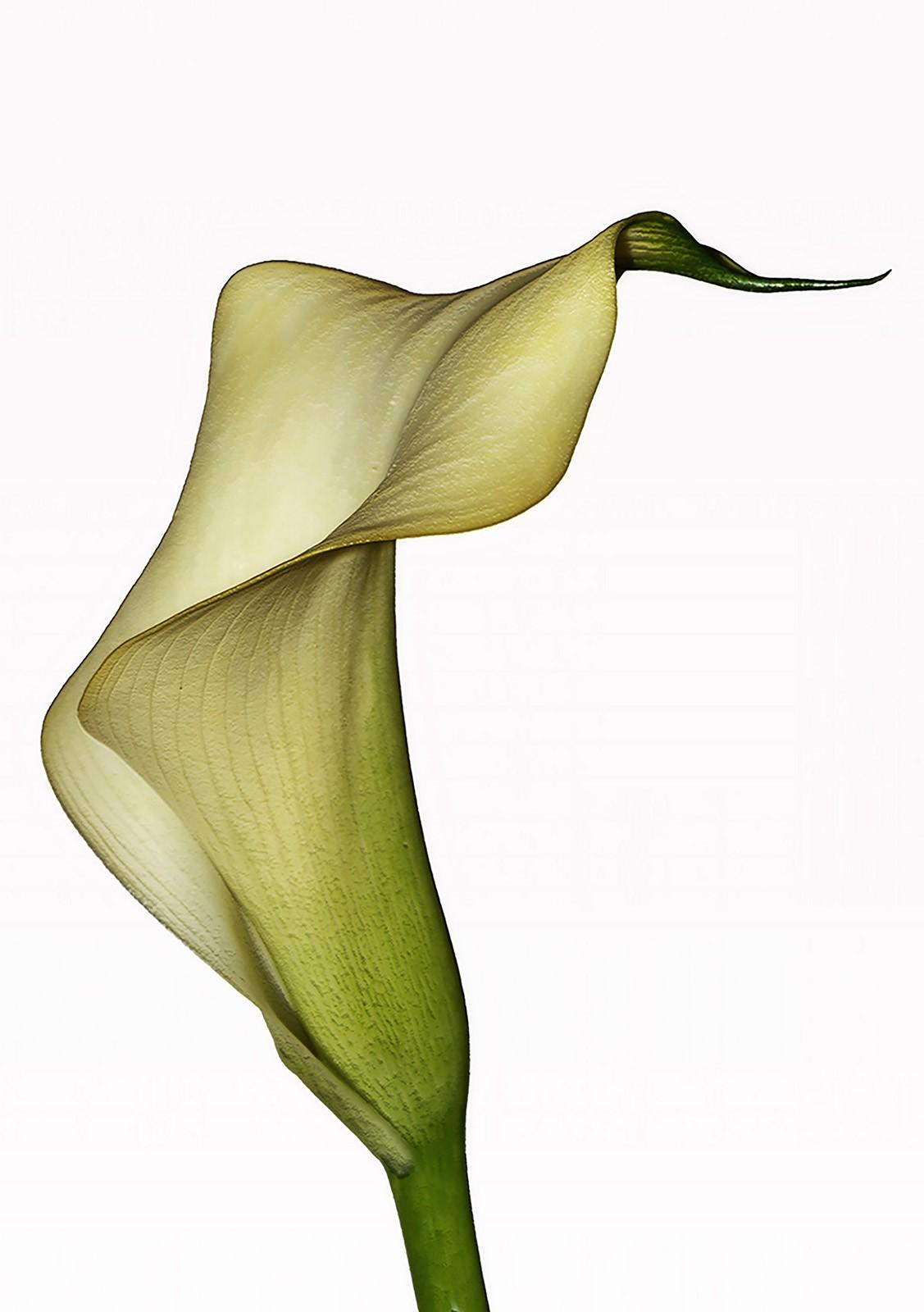
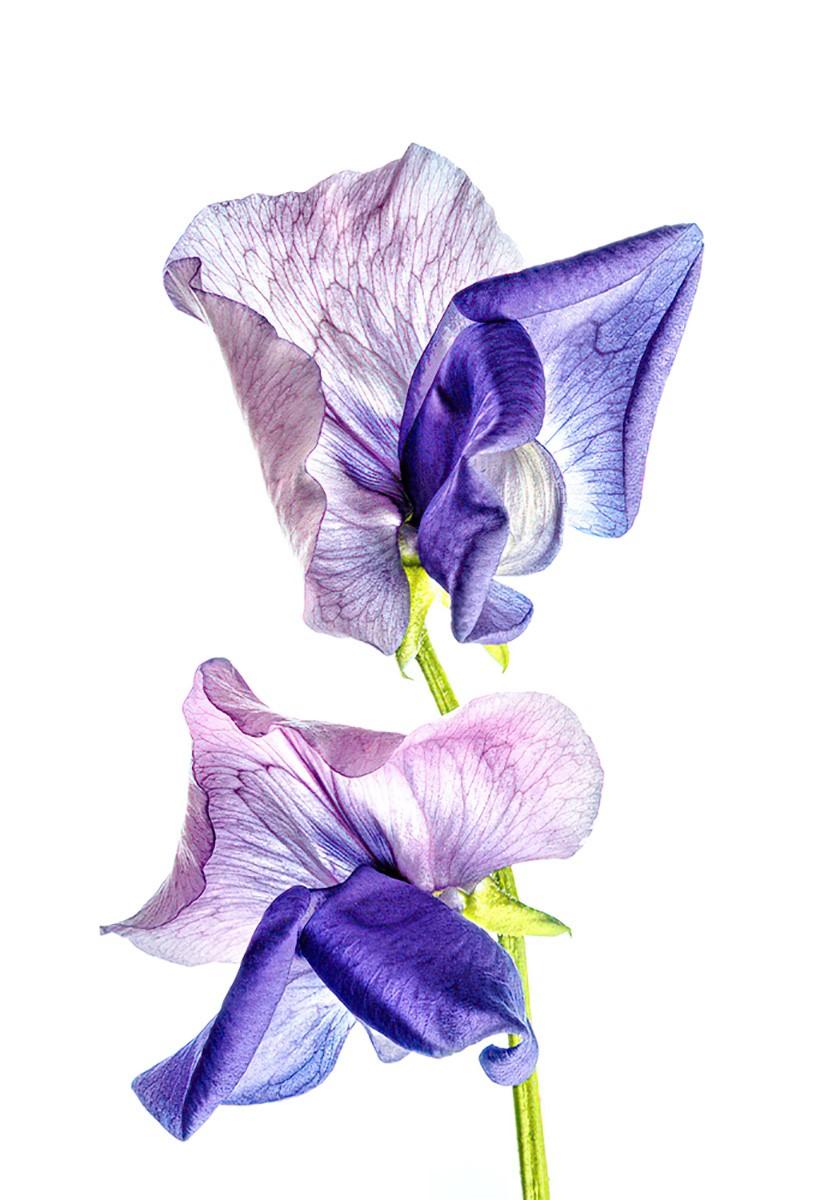
Lily Sweet Pea
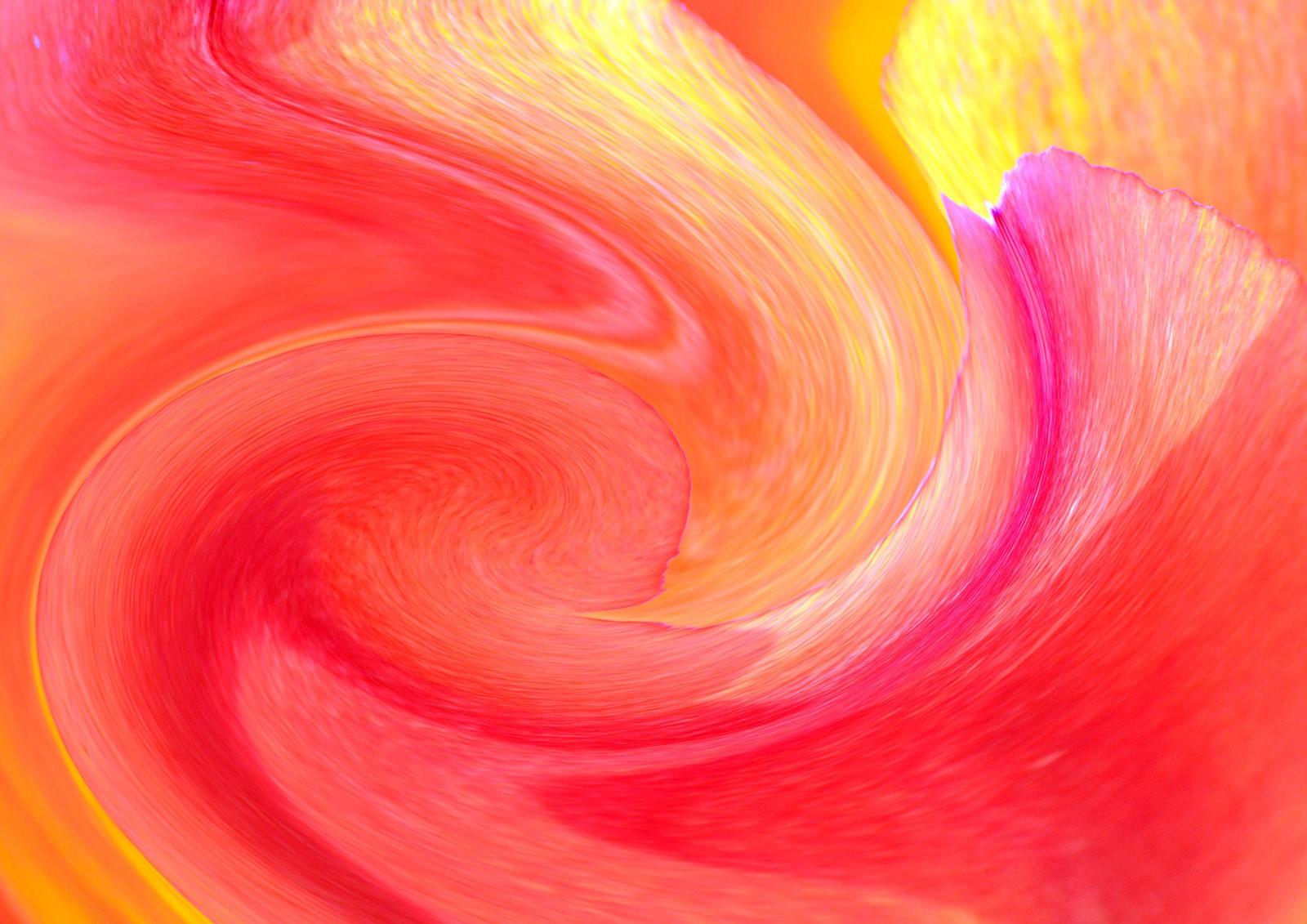
Tulip abstract
As time progressed, I was drawn to the beauty in the Sacred.

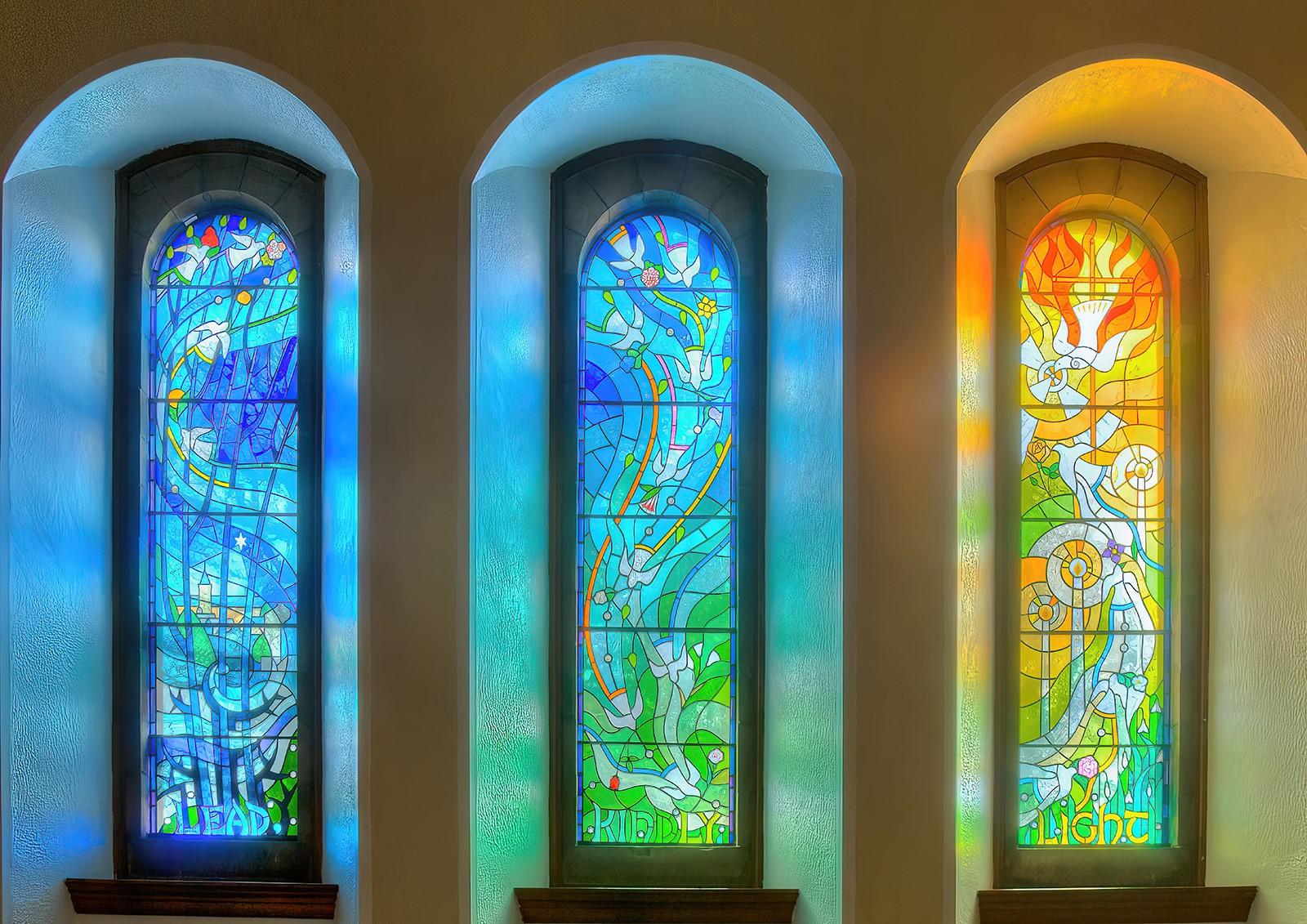 Dunblane Memorial Window
Sagrada Abstract
Dunblane Memorial Window
Sagrada Abstract
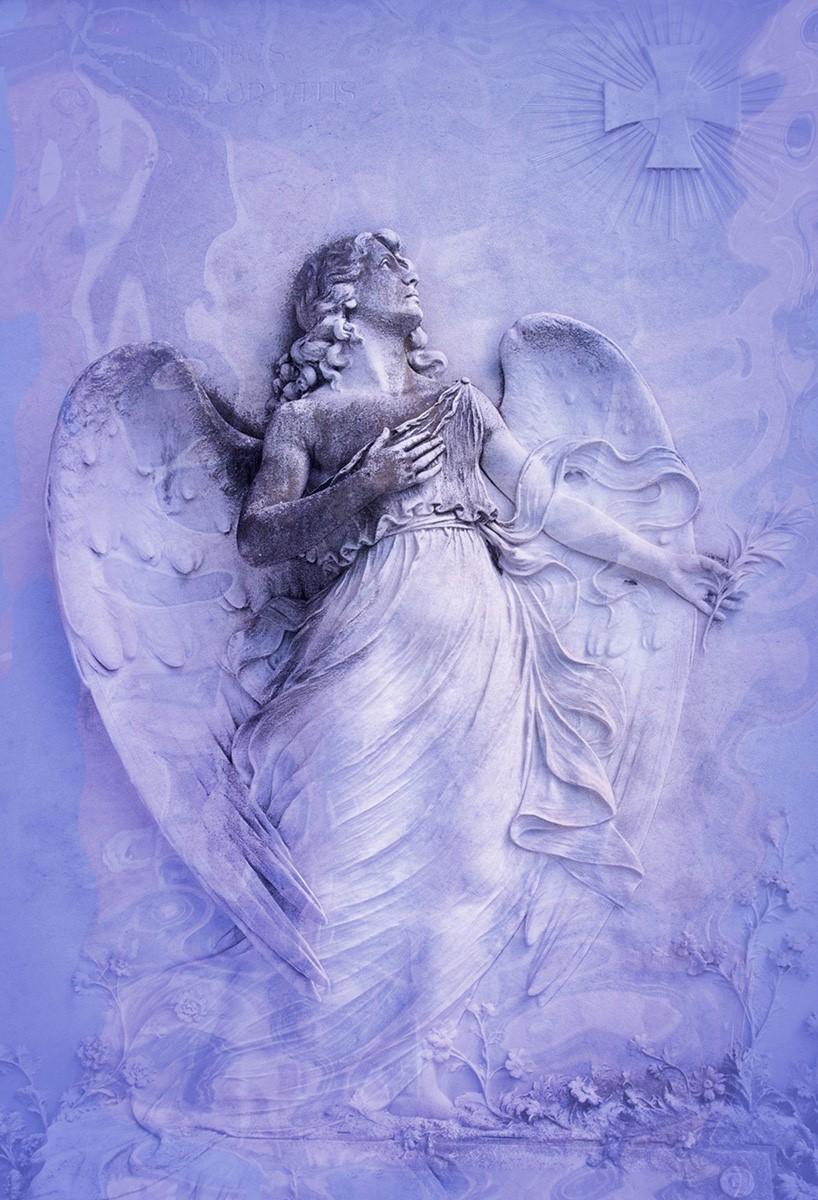 Venetian Angel
Venetian Angel
And then in 2016 I had a wonderful experience of visiting Kolkata and seeing the hidden beauty in the slums and the streets .
Bird man collecting seeds
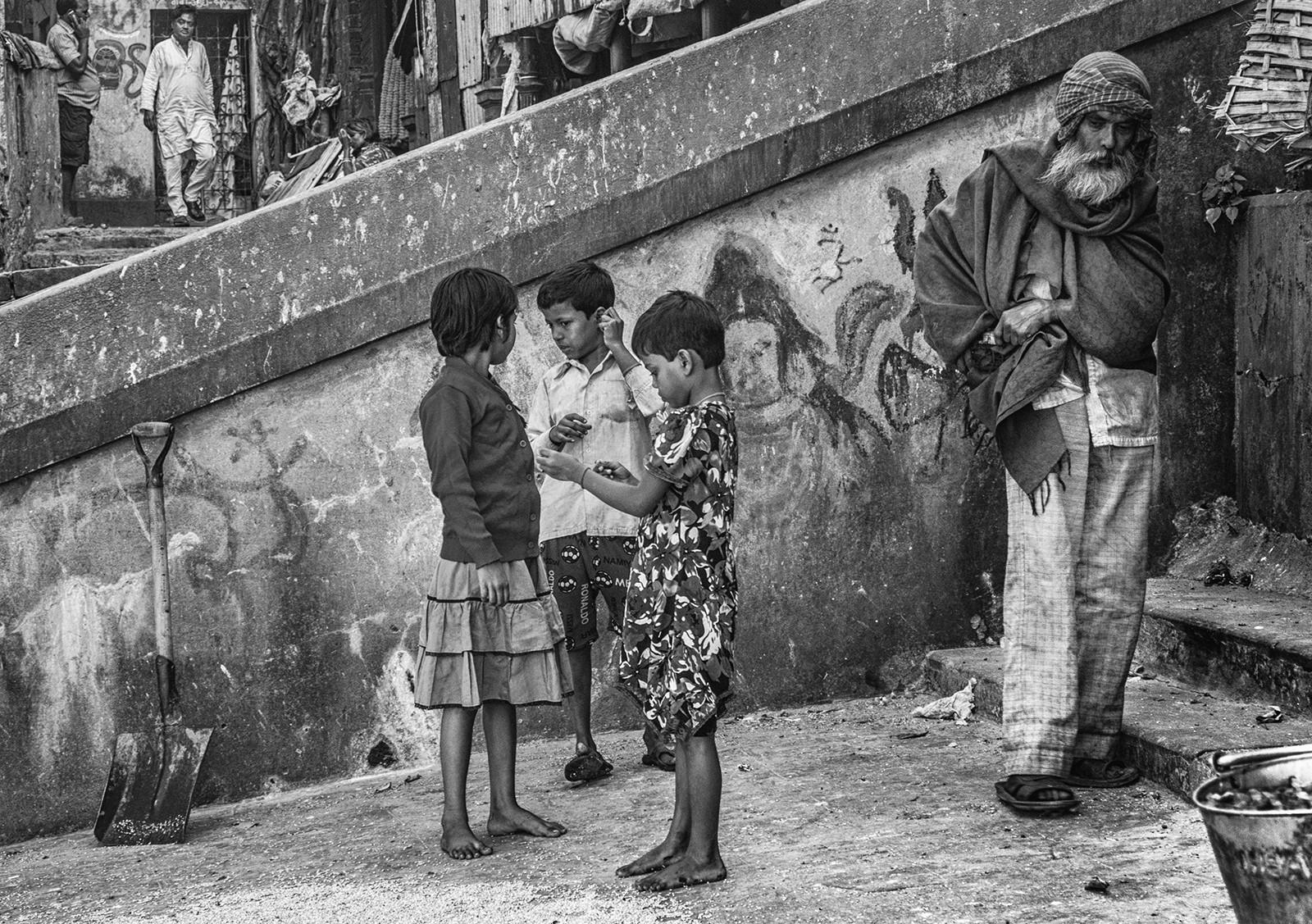
Have you seen the old man in the covered -in market
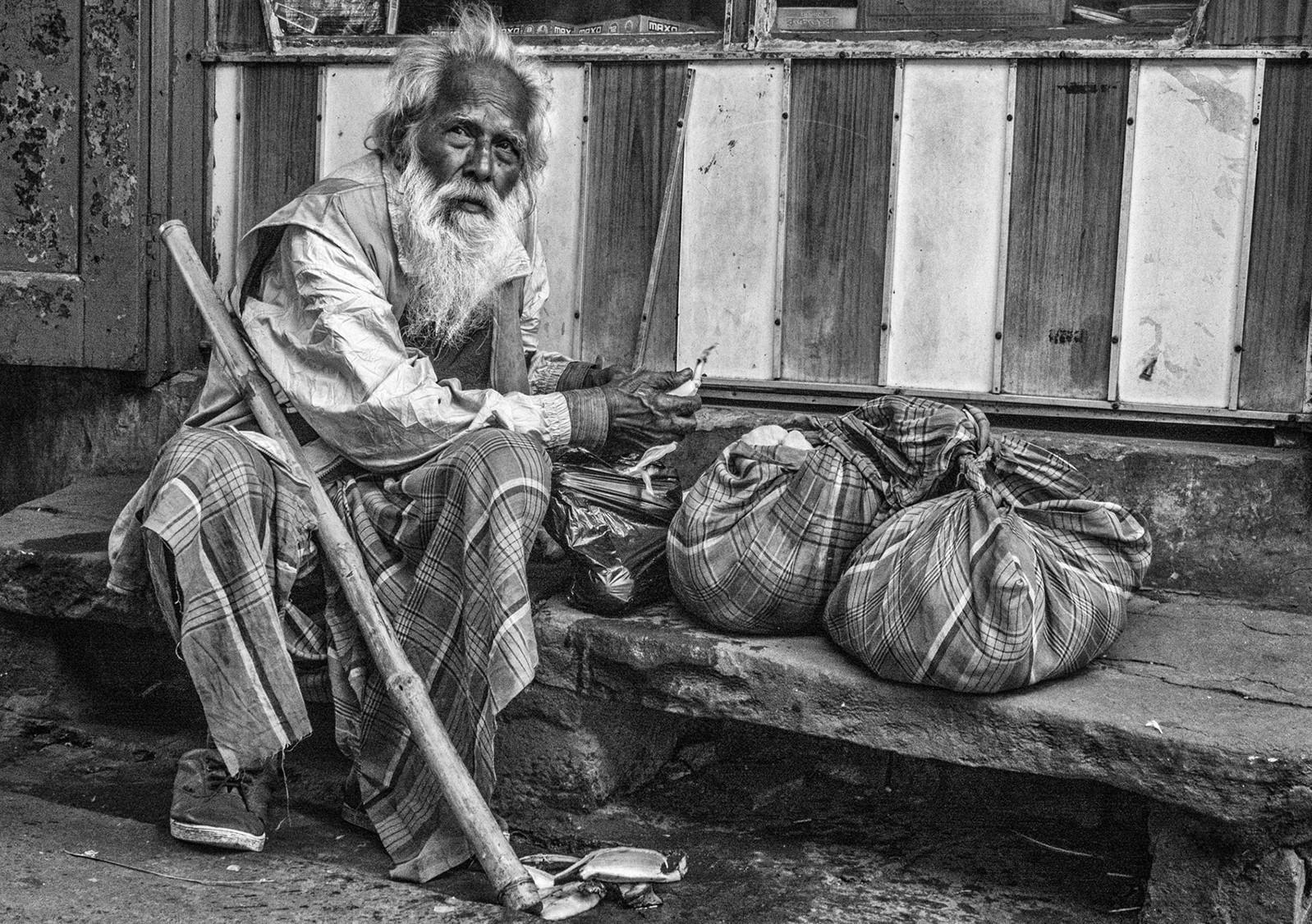
Step b y Step

Fast forward then to 2020. Then lockdown arrived. While we were all alone, isolated and unable to see loved ones, I returned to that first love of nature. It became a creative time for me and I learnt different techniques and became proficient in Photoshop for the first time. What a steep learning curve.
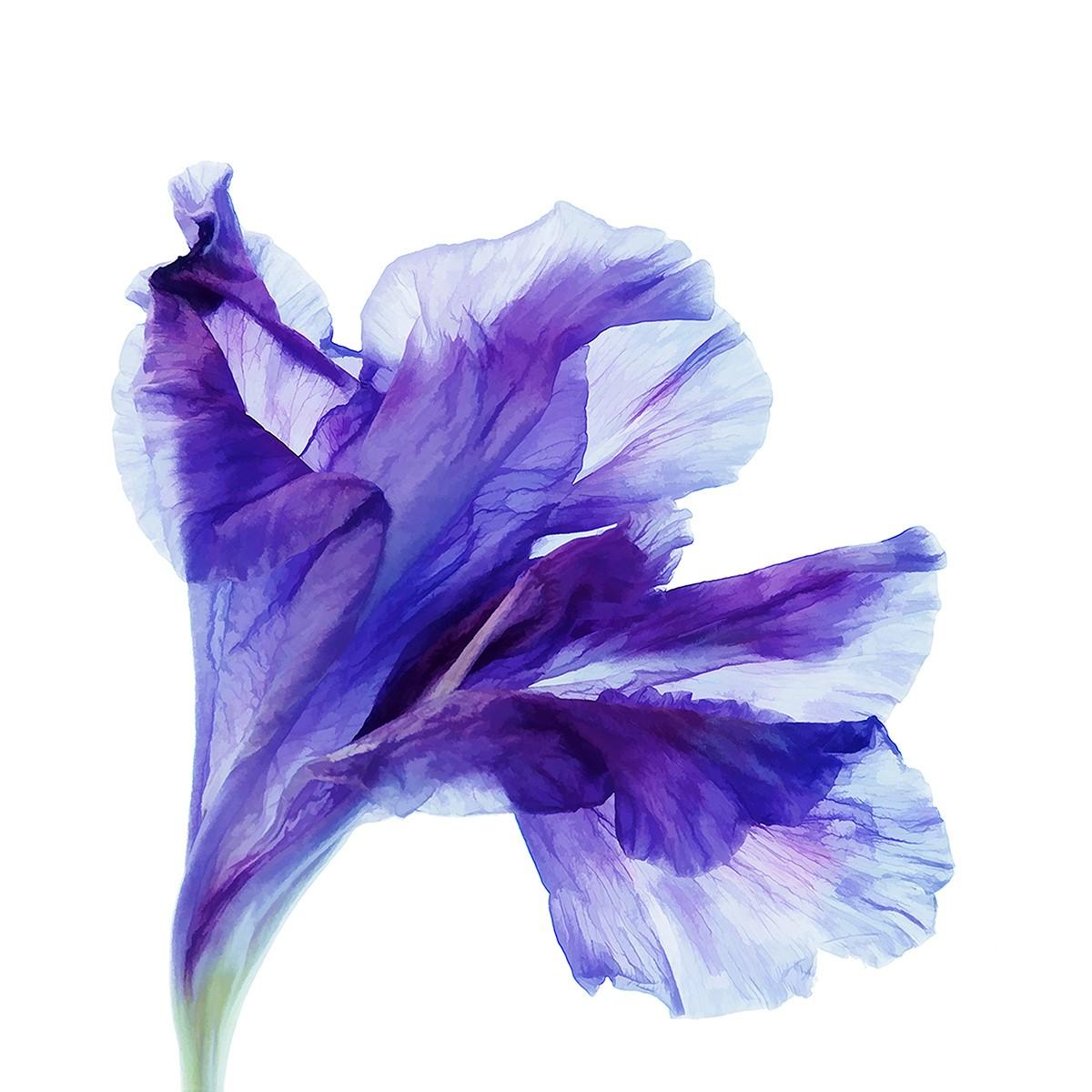
 Tulip Dying gladioli
Tulip Dying gladioli
Into the woods

Ice Patterns
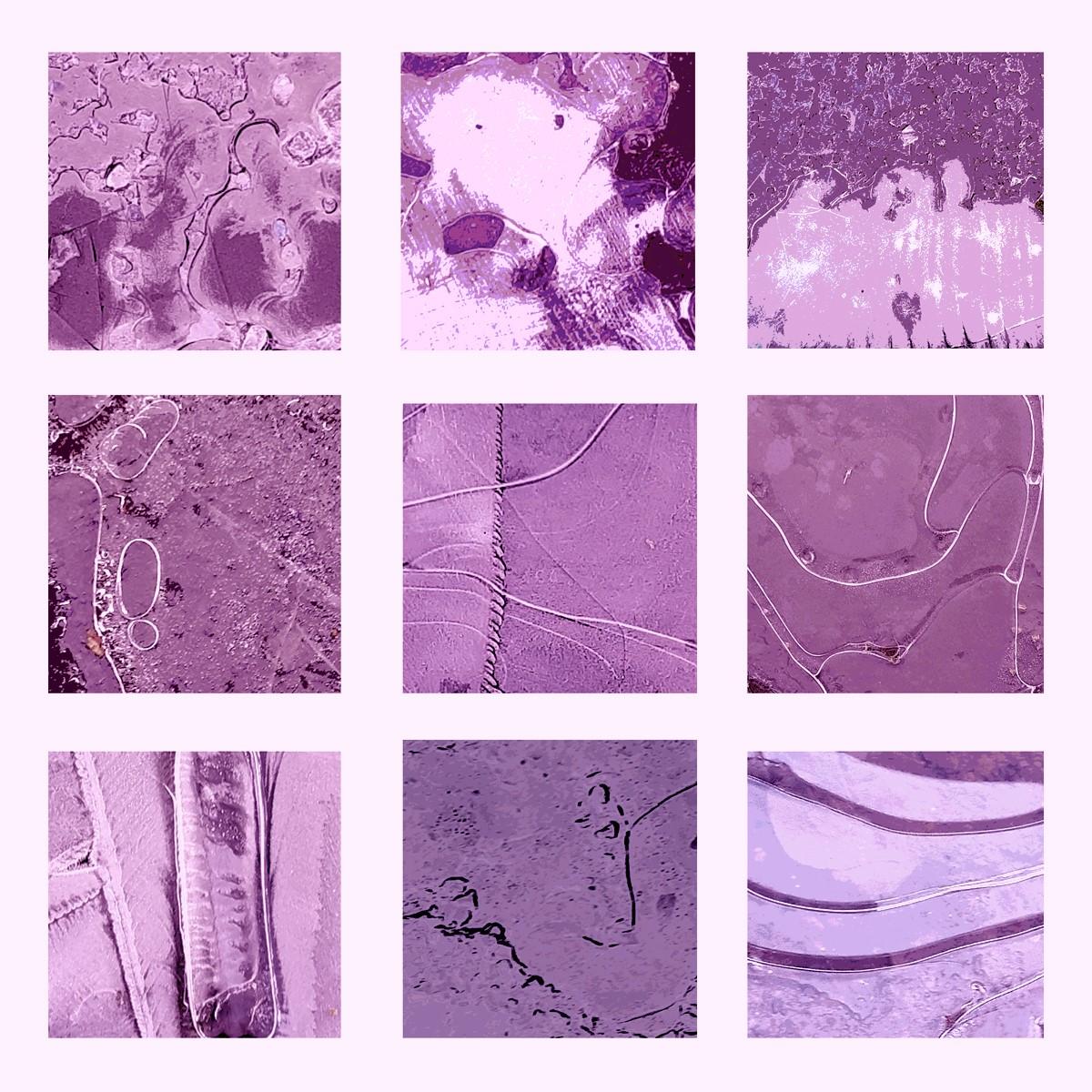
Finally Lockdow lifted and slowly I began to venture out, not very far, within an hour of home. By this time I had become interested in intentional camera movement and experimenting with a little bit of multiple exposure.

Into the darkness
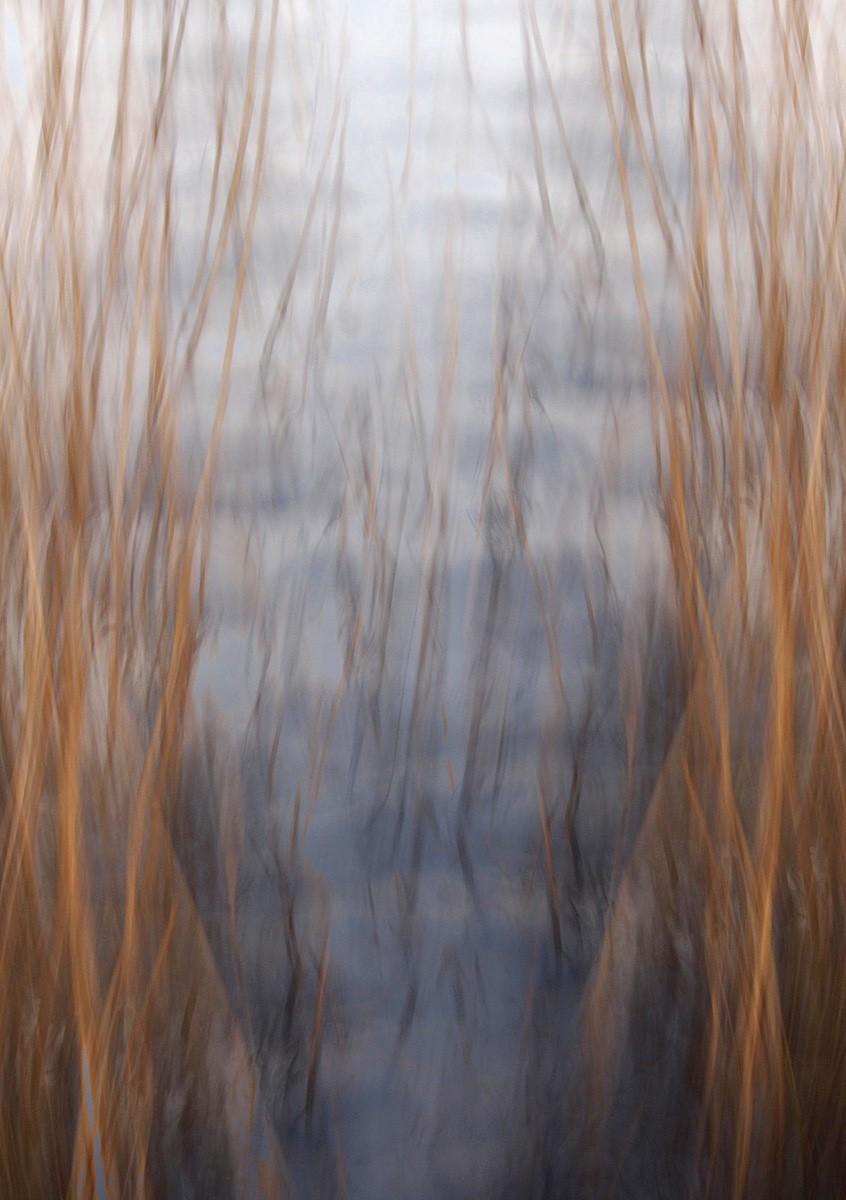 Rippling reeds
Rippling reeds

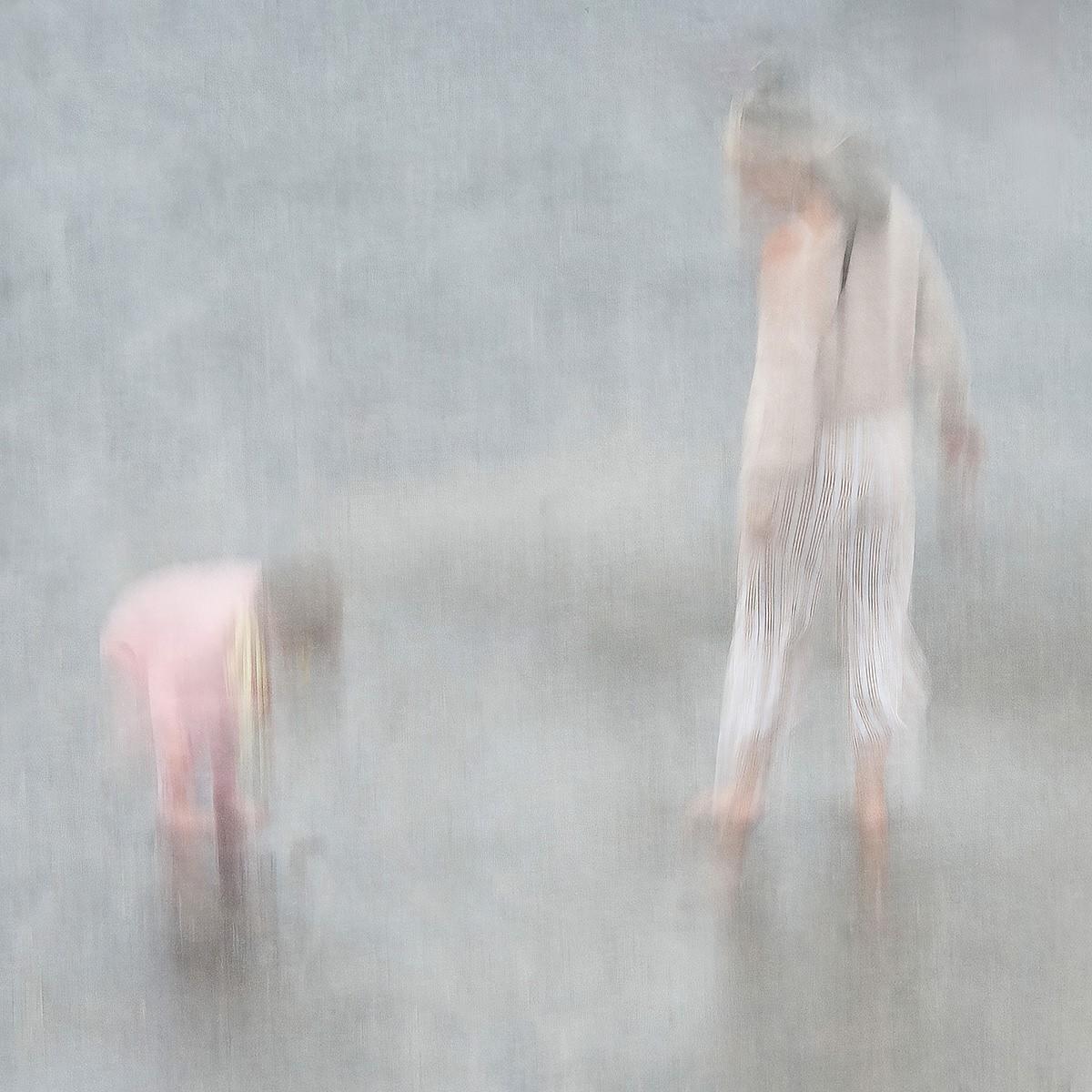 Amble
Playing on the beach
Amble
Playing on the beach
Avijit Datta FRSA FLS FTPS
Tuberculosis in Kolkata
 Text by Avijit Datta MD FLS FRSA FTPS
Images by Ritayan Mukherjee
Text by Avijit Datta MD FLS FRSA FTPS
Images by Ritayan Mukherjee
Diagnosis of tuberculosis (TB) includes X-rays. Wilhelm Rontgen, a talented amateur landscape photographer won the first Nobel prize for physics in 1901 for his discovery of X-rays. In 1905, Robert Koch won the 1905 Nobel Prize in medicine for discovery of the causal agent for TB.
Notwithstanding these two seminal discoveries, Johns Hopkins University has estimated that up to 25% of the world’s population i.e. 1.8 billion people are infected with TB, a disease of poverty which predominates in cramped conditions. The World Health Organisation has determined that in 2021 1.6 million people died, of which 187 000 had coexistent HIV – the “cursed duet”, so termed because HIV predisposes to reactivation of TB. The recent advent of multi drug resistance (MDR) and Xtreme drug resistance (XDR) complicates treatment and potential cure. Ending the global TB epidemic by 2030 is a health target of the United Nations Sustainable Development Goals (UNSDG). The International Union against Tuberculosis and lung disease (IUATLD; founded 1920) leads the global fight against the disease.
These images show patients and staff in a non governmental organisation (NGO) treating TB, St. Thomas’, Howrah, Kolkata. TB can affect lungs, bones, spine and other internal organs including meningitis, causing weight loss (‘consumption’), paralysis and death. Patient attendance and staff recruitment is difficult because of the risks and perceived stigma surrounding TB. Enforced isolation. Notwithstanding this, there are staff who have given decades of dedicated service and won international accolades.



















Photography in Kolkata has a rich heritage stemming from its inception in the 19th century. Julia Margaret Cameron (1815-1879) was born there as was Annapurna Datta (1894-1976). The Bengal school of film is also widely respected including Palme d’or winner Bharat Ratna Satayajit Ray (1921-1992), Ordre des Arts et des Lettres winner Padma Bhushan Mrinal Sen (1923-2018) and Padma Shri Ritwick Ghatak (1925-1976). There is likely to be a forthcoming encyclopaedia of the 2000 (sic) Indian photographic studios from the 19th century to be published next year by the Pagoda Tree Press.
The photographs in this article are by Ritayan Mukherjee, a multi award winning Kolkata based documentary photographer. He produced one of the 42 COVID-19 Contemporary blogs I edited; his was titled “Fighting against stigma for child health during COVID-19 in Kolkata“.
https://rps.org/news/groups/contemporary/2021/march/fighting-against-stigma-during-covid-19/
Ritayan is a People’s Archive of rural India (PARI) Fellow and is published by World Bank Group, UNDP, Spiegel, and Firstpost. He has contributed to two books –‘Calcutta Then & Kolkata Now’ by Roli Publication and ‘People Like Us’ by The People’s Archive of Rural India. His latest publication is Nomads from the Tibetan Plateau, published by Fountain Ink.
REFERENCES
https://publichealth.jhu.edu/2022/the-other-pandemic-why-tb-deserves-your-attention#:~:text=TB%20is%20preventable%20and%20curable,the% 20bacterium%20that%20causes%20TB
https://www.who.int/news-room/fact-sheets/detail/tuberculosis
https://www.who.int/teams/global-tuberculosis-programme/tb-reports/global-tuberculosis-report-2022/tb-disease-burden/2-1-tb-incidence
Patricia Ruddle

I’ve been taking photos of masks for several years. When I discovered that the Leeds Discovery Centre was showing masks from their Collection during the Easter holidays, I immediately wanted to go. I asked fellow North member Rachel Perry to go with me because she has been interested in the idea of photographing collections.
The afternoon turned out differently. The curator brought out a half dozen African masks for us to photograph. Although this was interesting and enlightening, the conditions, that is the stand and light, weren’t right for taking serious portraits. However, after the mask session, the curator took us on a tour of the Centre’s warehouse archives, which contain over a million objects covering subjects such as natural history, decorative arts and industrial artefacts.

We spent a joyful half hour roaming around, delighted to see the many objects on display. Both of us particularly enjoyed the crazy, often surreal juxtaposition of the items.




Leeds Discovery Centre - Leeds Museums & Galleries




Rachel Ann Perry
Collections of objects are often random fragments of lived lives (Susan Hiller, contemporary artist). The contents of the state-of-theart warehouse at Leeds Discovery Centre certainly affirms this thought.

During a visit with my fellow photographer Patricia Ruddle, I was afforded an unexpected opportunity to look at the objects housed in the warehouse. We had gone there to photograph African masks but were wonderfully side-tracked.

The warehouse was stacked high with a very wide range of historical objects. There seemed to be no discernible order as to how the objects were placed.





The high-quality taxidermy collection of animals and birds caught my eye. A snarling hyaena appeared poised to leap off the shelves. I noticed a deer, swan and a chimpanzee amid furniture, old signposts, toys, and ceramics. Every time you looked there was something else to see.




It was a strange but wonderful juxtaposition of pieces of the history of the people of Leeds.

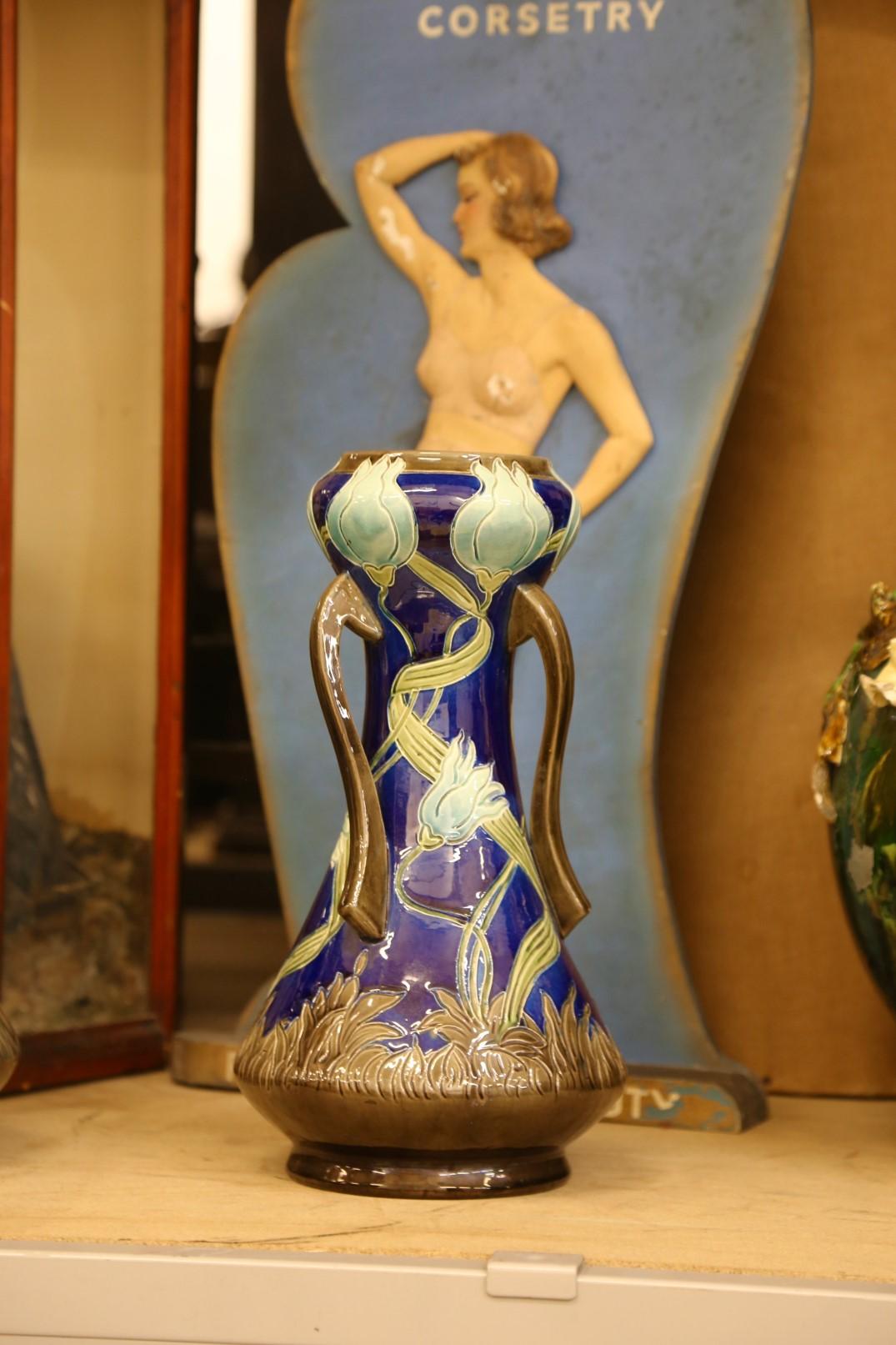
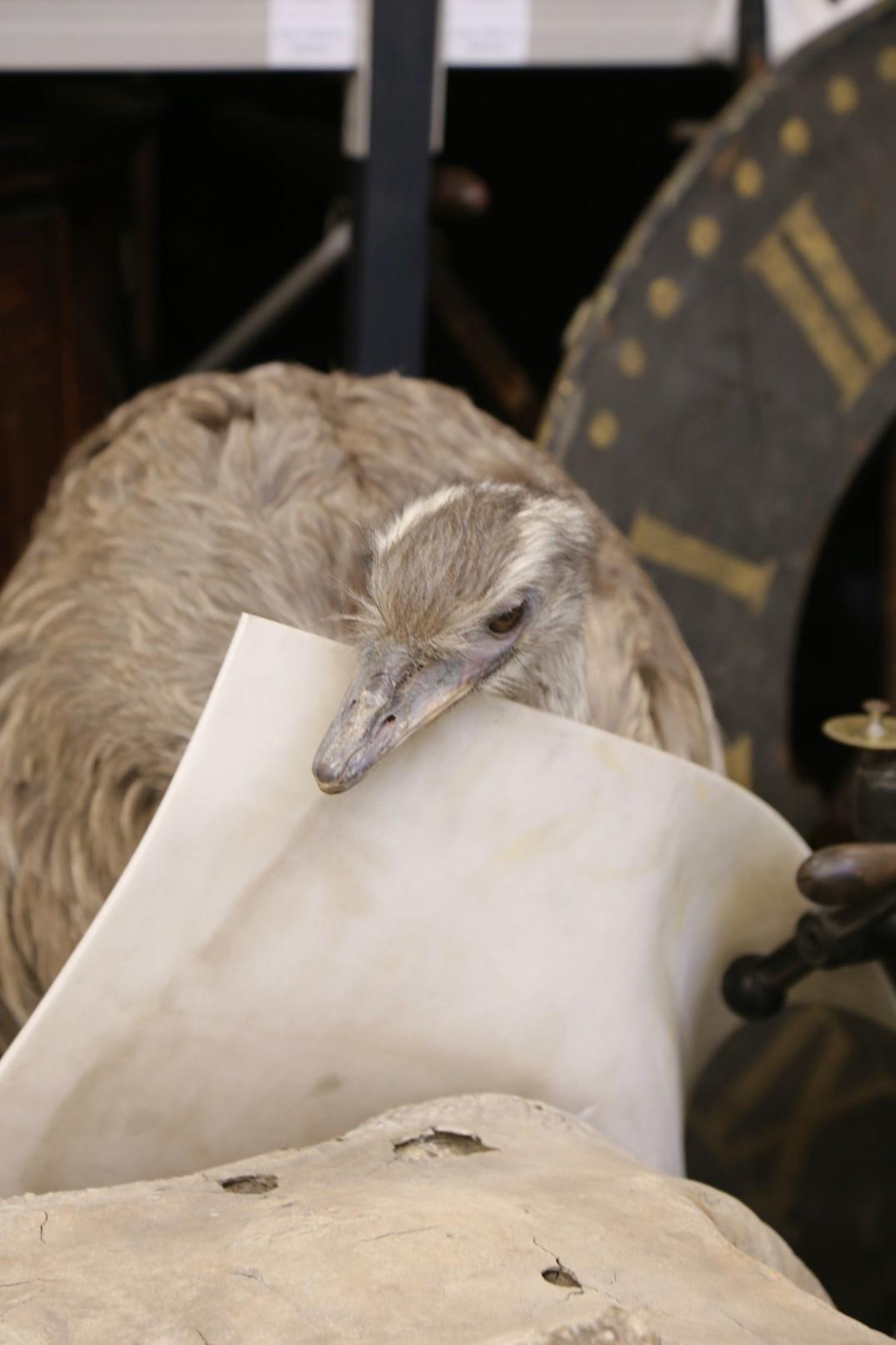
Lyn Newton
Ooooh…..Harris what a dream of a place. The ever changing light, the seas of blue and turquoise, the clouds that change in seconds from fluffy to heavy and brooding, the white sands, and most of all—the enormous emptiness of beaches that stretch endlessly before you.
In April I joined Iain McGowan, Joy and friends for a second trip to this magical place. Home was a little cottage overlooking Seilebost beach arguably the most idyllic place on Harris. Sitting on our veranda we watched as the sea made its way in, forming channels and islands before finally enveloping every last grain of sand.
Abstracts of the channels and islands as the tide races in









One of the 30 home weavers left in Harris Donald turns out beautiful Harris Tweed material but he fears for the future of the island’s home weaving industry. Preparing the cloth so that it can be used has become difficult with the demise of the small local processers.


Two projects I am working on — amazing what can be done with one corrugated metal shed and the rock patterns just such a gift.

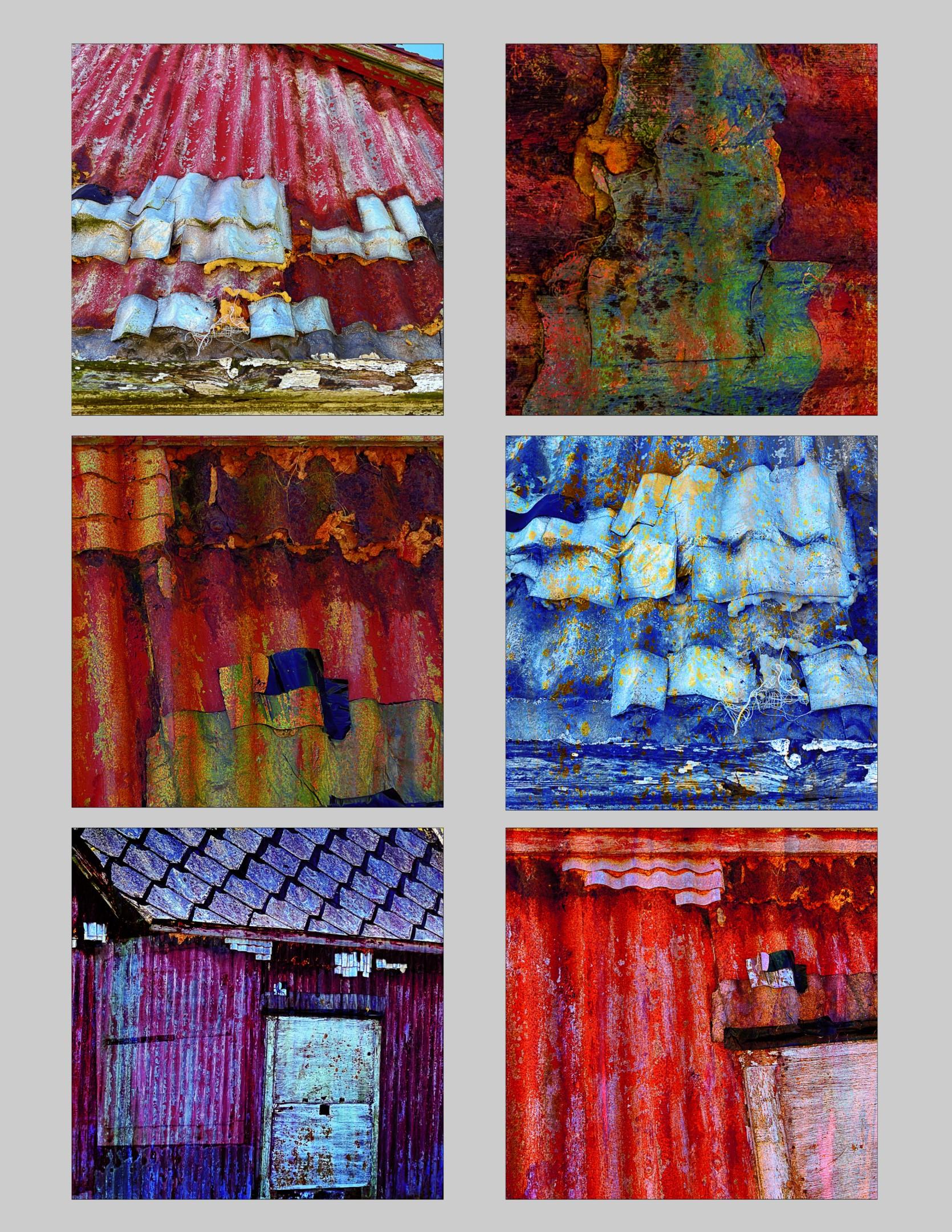 Martyn Pearson
Martyn Pearson
The Picture Essay
Photography is rarely effective when presented as single, stand-alone pictures. A series of photographs, or photographic essay is the medium’s most impactful form; each image supporting or building upon the others in the set to tell a story, transmit a concept or reflect a theme. That is not to say that a single picture cannot be strikingly powerful, but these more often punctuate a number of others, like an exclamation mark, or a particularly profound sentence.
When working as a commercial photographer, I usually made individual photographs in the service of a company, to sell a specific product. But, for me, this became a technical exercise, and it wasn’t until I started making work for myself that I realised that the extended project was the most fulfilling way of working and it wasn’t until 1993 when I began teaching, and through teaching, truly came to perceive the communicative potential and aesthetic limitations of the photographic medium.
Shown here is a tiny selection of photographs from picture-essays I am currently involved in. The first are from a short project on the history of paper manufacture in the East Lancashire area, specifically the outskirts of Blackburn. These images depict the remains of the Sun and the Star factories. This brown-field site is now being cleared for housing and the land is often used by dog walkers and other members of the public. From the mid-19th through to the mid to late 20th Century, paper making in the area was a major source of employment. The industry required good water quality and the local textile mills allowed for an excellent supply of cotton waste or ‘rags.’ Employees of the Star mill were often called ‘Star Babies.’

 The remains of the Sun and Star factories
The remains of the Sun and Star factories
Further East in Lancashire is the small town of Padiham which is near to Burnley. Much of Lancashire is well known for textile mills and the loud clattering of the looms often led to weavers suffering hearing loss. Many, primarily female weavers learned to lip read and develop an informal language, locally termed ‘mee-mow-ing.’ The river Calder runs through Padiham, and to feed the many mills there, narrow canals, off the Calder were created, resulting in a profusion of bridges required to ease passage through the town.
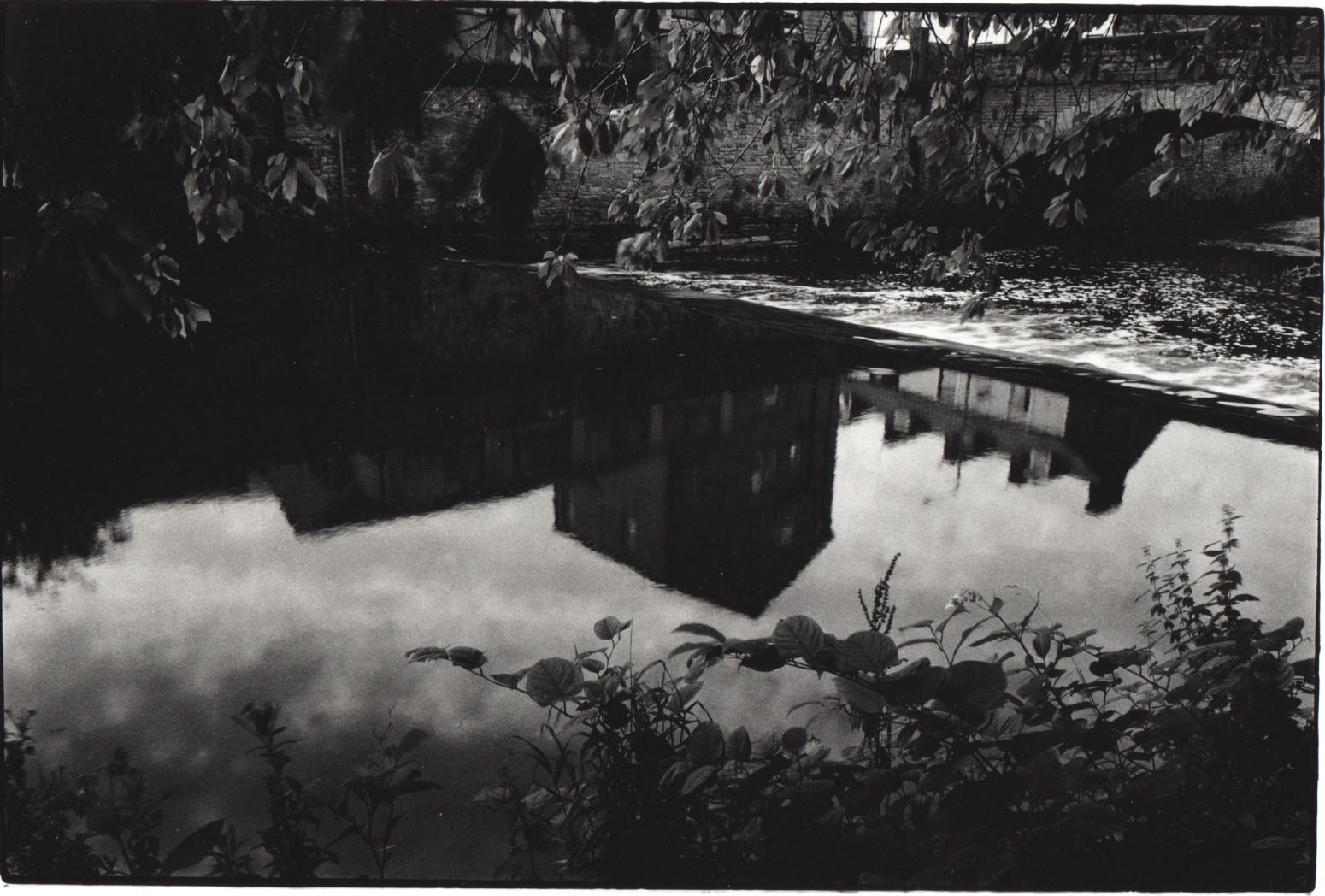
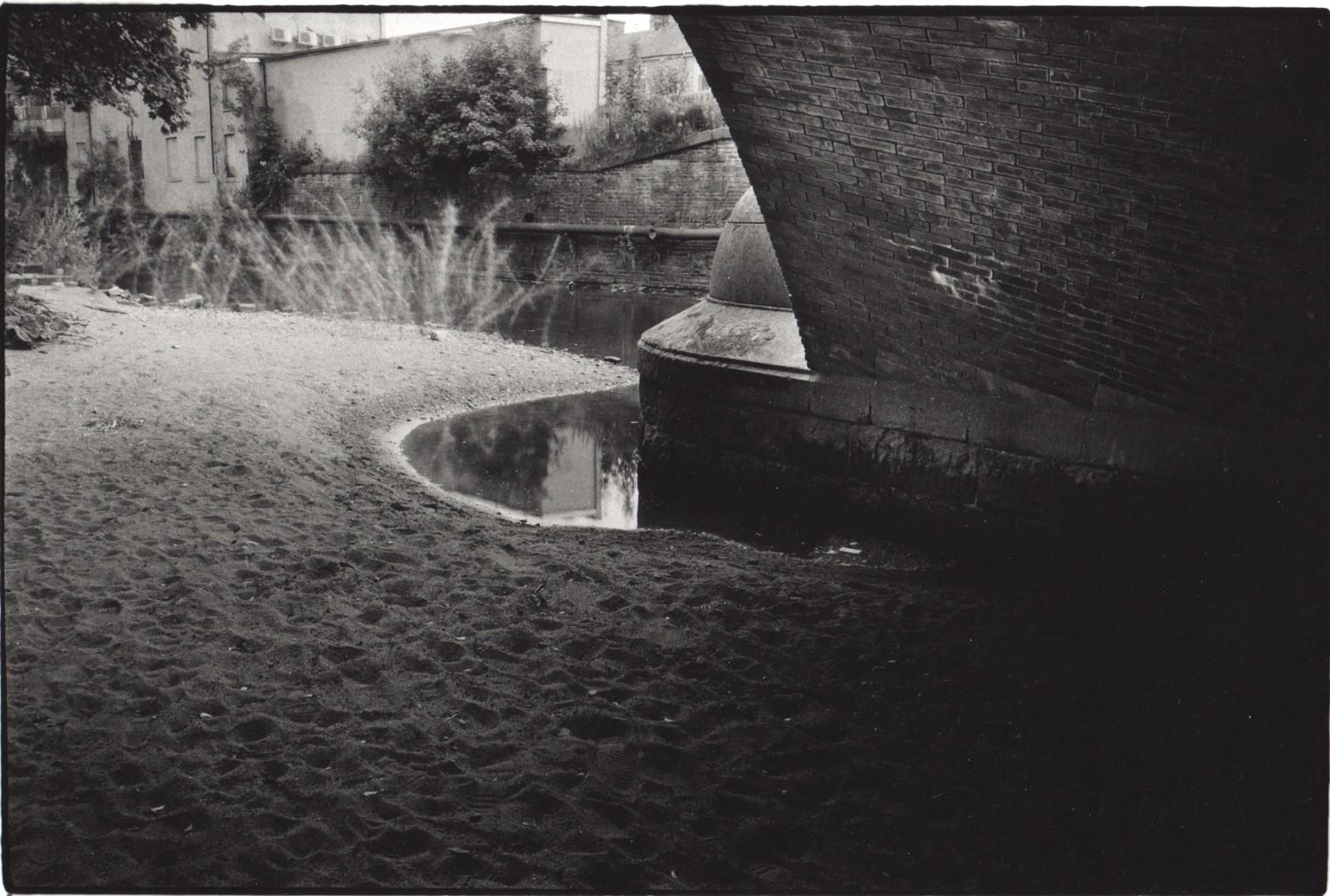 Padiham Bridges
Padiham Bridges
Windthrow and Windsnap are terms used to describe the state of fallen trees. Firstly, Windthrow refers to trees that have been uprooted by extreme storms. Secondly, Windsnap refers tree-bole breakage. These are naturally occurring phenomenon and can be part of the natural life cycle of trees as it is usual for a fallen tree to provide rich habitat and sustenance for many species of fungi, plant, and insects, as well as offering valuable nutrients for the forest-floor. Increased wind speeds, arguable caused by climate change, are now becoming a substantial threat to some of the World’s forests and this is escalating cases of windthrow.


At, or around midnight on 11th March 1864, the Dale Dyke Dam broke as the reservoir was being filled for the first time creating a 700million-gallon deluge of water estimated to be traveling at 60 mph down the Loxley Valley and through to the center of the town of Sheffield. A minimum of 240 people were killed, and 600 houses were damaged or swept away by the ‘Great Flood.’ My response to this tragedy is to create a body of pictures taken at key points throughout the route of the flood, from the Dale Dyke Dam itself, on to the Wicker Arches at Sheffield center, about 8 miles distance. As the flood occurred around midnight and during wintertime, these pictures will be taken from October to November 2023 and around midnight. In addition, I have approached a few poets whom I hope to work collaboratively with. The photographs here, although not intended as part of the essay, are of Neepsend in Sheffield. This area was devastated by the flood. This work will form part of a 160th year commemorative event in Sheffield in 2014.



Peter Bartlett
The Rhubarb Triangle is a 9-square-mile area of West Yorkshire between Wakefield, Morley, and Rothwell famous for producing early forced rhubarb. The Rhubarb Triangle was originally much bigger. Between 1900s and 1930s, the rhubarb industry expanded and at its peak covered an area of about 30 square miles.
Rhubarb is native to Siberia and thrives in the wet cold winters in West Yorkshire. At one time 90% of the world's winter forced rhubarb was produced from the forcing sheds that were common across the triangle.
Cultivation is not mechanised and in the cold, wet climate of the winter months it is a brutal process. Understandably the number of commercial growers has diminished in recent years.
Each February, the City of Wakefield celebrates its annual Rhubarb Festival - a mixture of farmer’s market and food and drink festival.
Above all it is a celebration of “all things rhubarb” and of an historic local agricultural industry.
These images were made during the 2023 Wakefield Rhubarb Festival. I plan to revisit the Festival in 2024 to expand and develop the project.









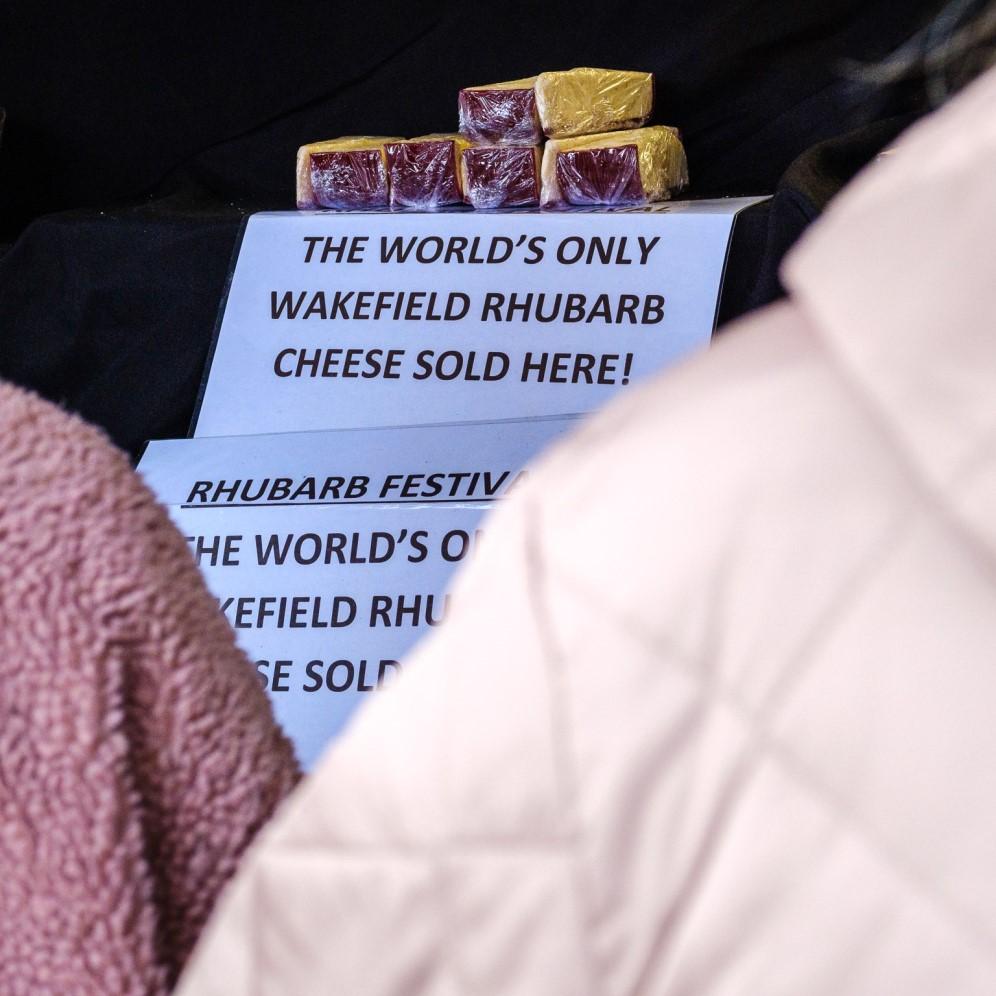
















 Cosmos
Dewdrops on Sweet Pea
Cosmos
Dewdrops on Sweet Pea




 Dunblane Memorial Window
Sagrada Abstract
Dunblane Memorial Window
Sagrada Abstract
 Venetian Angel
Venetian Angel




 Tulip Dying gladioli
Tulip Dying gladioli



 Rippling reeds
Rippling reeds

 Amble
Playing on the beach
Amble
Playing on the beach

 Text by Avijit Datta MD FLS FRSA FTPS
Images by Ritayan Mukherjee
Text by Avijit Datta MD FLS FRSA FTPS
Images by Ritayan Mukherjee























































 Martyn Pearson
Martyn Pearson

 The remains of the Sun and Star factories
The remains of the Sun and Star factories

 Padiham Bridges
Padiham Bridges















